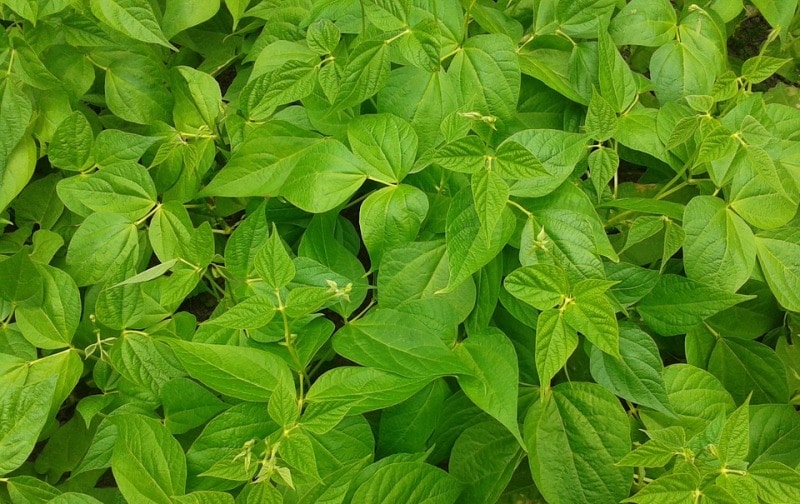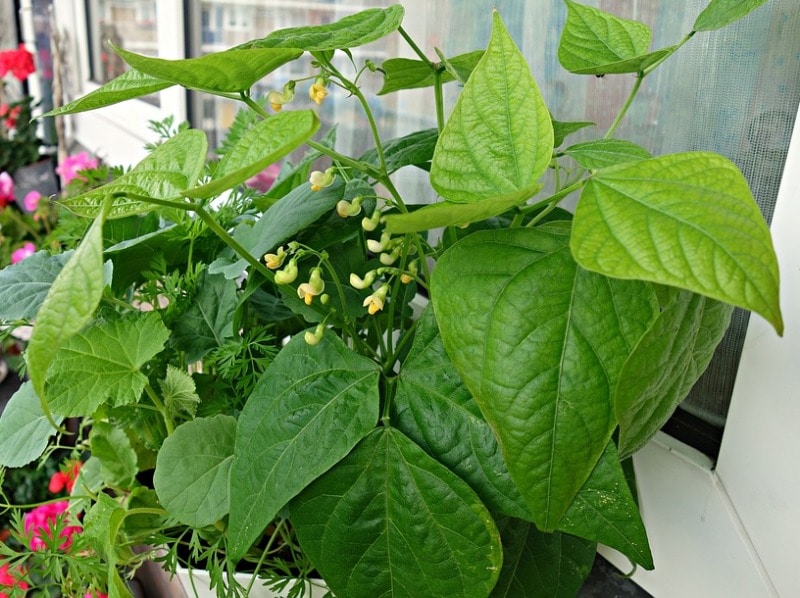A step by step guide for growing beans hydroponically
Today, we discuss growing beans hydroponically along with a required hydroponic nutrient solution for beans, care, and harvesting hydroponic beans. Bean is the common name for the seeds of several plants of the family Fabaceae which used by animals as well as humans for consumption.
No matters in which corner of the earth you live beans are loved always and everywhere. From soups to vegetable stocks to various Chinese delicacies beans are must hence it is crowned as one of the healthy vegetable enriched with vitamins and good proteins. For many gardeners, winter means they can no longer enjoy their own garden-fresh beans. But thanks to hydroponics the growing of plants in a nutrient solution rather than soil dependent on weather, there is no limiting factor. You can grow beans outdoors as well as indoors year-round instead of resorting to store produce or depending on chemical-laden beans. With some seeds and a few supplies, you can raise a hydroponic garden and have fresh beans all the way through the coldest winter.
Beans are a favorite in the midst of many farmers, hobbyist gardeners, and hydroponic growers because of ease and simplicity. If provided with sufficient amount of nutrients, water, light, and proper plant care, then you can obtain green, tall and healthy beans. Beans are famed as the most productive and low-maintenance vegetables that can be grown hydroponically. You can choose the types of beans you wish to grow, including green beans, pole beans, pinto beans, and lima beans. In further writing, we will discuss growing green beans in hydroponics and its requirements in a hydroponic system.
Know your beans
Warm-season bean plants are grown for their highly nutritious immature pods (snap beans), immature seeds (shell beans) or mature seeds (dry beans). Beans may fall into two categories as per their growing habits: determinant-type growth, those beans that grow as a low bush, or indeterminant types, those with a vining habit requiring support, also known as pole beans (includes the majority of beans). Most beans are climbing plants, although bush varieties are also available. If your bean seeds are labelled climbing, vine or indeterminate type, you will have to provide a trellis for them to climb and yield well. Bush beans do not require a trellis and are more appropriate for small spaces. If space becomes an issue and you wish to grow more than one type of vegetable in a single system, beans and peas have similar needs and do well together and the answer will be same for how to grow peas hydroponically.
Selecting a site for growing beans hydroponically:
Beans are characteristically vines or creepers and tend to grow vertically and thus you will need to climb up poles or homemade supporting structure such as ropes, stalking or trellis to support their growth. So your first work is to select the site in such a way that supporting structure do not obstruct the light from reaching other smaller plants in your garden or grow room. These give you the advantage of maximizing your space and adding lush green color to your place. So when we are talking of hydroponic beans you should select a place where you can place your system as well as you have support for the vines to trail upwards but make sure it doesn’t go up beyond your reach so it is better to utilize outdoor space like a balcony where it receives full sun for best yield.

Growing seedling or Seed germination of beans in the hydroponic system
Best way to propagate hydroponic beans are same as hydroponic chickpeas which are by using its seeds. Beans germinate very fast, normally in less than 2 weeks sometimes in as soon as 5 – 7 days after sowing and its seed remains viable for about two years. Sow seed 1 inch (2.5 cm) deep. This varies obviously depending on the variety, seed quality, and environmental factors. When germinating seeds in outdoor conditions start in spring after all danger of frost has passed and the temperature is 60°F (16°C) favoring the sprouting. If you wish to start beans indoors, sow seed in peat pots or coco-coir starters 3 to 2 weeks prior to transplanting seedlings to the hydroponic setup. The most favorable indoor temperature is 65°F (18°C) until germination. The newly germinated bean can also be used as hydroponic bean sprouts.
You may also like Growing Spaghetti Squash; Planting; Care; Harvesting.

Once the seeds have germinated into a start with at least two true leaves, it should be placed in the hydroponic system very carefully avoiding any injury to the newly emerged seedling, if it is not germinated there. Spacing, of course, varies amongst different varieties. Bush beans are usually planted 2-4 inches apart, pole beans are generally spaced roughly 4-6 inches apart because they will be growing vertically so that crowding is avoided.
Grow media for hydroponic beans
A loose grow media is suitable for hydroponic bean cultivation. Perlite-Vermiculite blend or expanded Clay pebbles both have proven its worth. Perlite has a neutral pH and will not affect the alkalinity or acidity of the nutrient solution provided to the growing plants. It is reasonably priced and reusable. It is very porous and has excellent wicking action, means it will absorb and draw up liquids via capillary action and make it available to the growing plants. Expanded clay pebbles, clay aggregate enables a balance of moisture, nutrients, and aeration to your plants. Scope of root rot is also eliminated by the space between the pebbles allowing all-important air circulation to the developing roots.
Hydroponic system for growing beans
As per the suggestions of experienced hydroponic growers beans grow best in an ebb-and-flow system and NFT system with a loose growing medium especially for the commercial hydroponic beans or when growing beans plants in large numbers. Rest for home growers dutch bucket system also works well along with the loose grow media.

Lighting requirement for hydroponic beans
Beans prefer full sunlight conditions. More sunlight equates to a high harvest. 12 – 13 hours a day is just compulsory for getting a good yield. So we suggest selecting a site which provides this much direct light to the growing plants or you can arrange grow lights for your small green plants.
You may be interested in Growing Eggplants Hydroponically.
Temperature requirement for hydroponic beans
The optimal temperature for the widest range of hydroponic beans is 70 to 80 degrees Fahrenheit during the day cycle and about 65 to 70 degrees during the night cycle. Temperatures below 60 or above 90 F. will have unfavorable effects on plant development and pod growth.
Nutrients solution for growing beans hydroponically
One reason beans are so easily grown hydroponically is that they require only relatively small amounts of nutrients mixed with water which is stored in the reservoir.
If you’re not a hydroponic expert or don’t want to put in so much of efforts to formulate the solution on your own, a pre-mixed ready to use nutrient formula is advisable and can be brought straight from plenty of online stores please remember the instructions to use the concerned nutrient formula is clearly written on the packet so follow the simple steps and relax your plants will grow on their own. Changing and refilling the nutrient solution periodically is necessary to prevent plant damage via Salt Build Up and other issues like deoxygenation due to poor aeration. Suitable pH condition for growing hydroponic beans is 6.0-6.5.
You should not miss the Growing Okra Hydroponically.
How to harvest and store hydroponic beans
Beans grown hydroponically will generally harvest more rapidly than those grown conventionally. Conventionally the maturity duration is about 60 to 90 days, which of course varies depending on variety and environmental factors. Green beans are picked young and tender before the seeds inside have fully developed because mature beans are not good for eating as they lose their crisp and freshness. Make sure you do not tear out or disturb any vines during the harvesting process.
Look for firm, and pods that are firm generally as thick as a pencil. Harvest green beans every day; as the more you pick, the more beans will grow. Store beans in a moisture-proof container in the refrigerator. Beans can be kept fresh for about 4 days, or blanched and frozen immediately after the harvesting. Beans can also be canned or pickled for long term storage.
That’s all folks about growing beans hydroponically. Keep growing veggies in hydroponics!.
You may be interested in Hybrid Coconut Cultivation; Yield; Varieties.
Very informative and helpful. We want to learn practically. How do you help us? And your fees & etc. Please send full details of training, timing and others necessary rules and regulations. Thank you.
Hi Jagdish,
I want to learn about it and need a practical experience. Please let us know if u can arrange workshop.
Hi jagdish,
Nice article.
I would like to grow edamame, could you please advise how to go about it.
Akshai Malik
9810777597